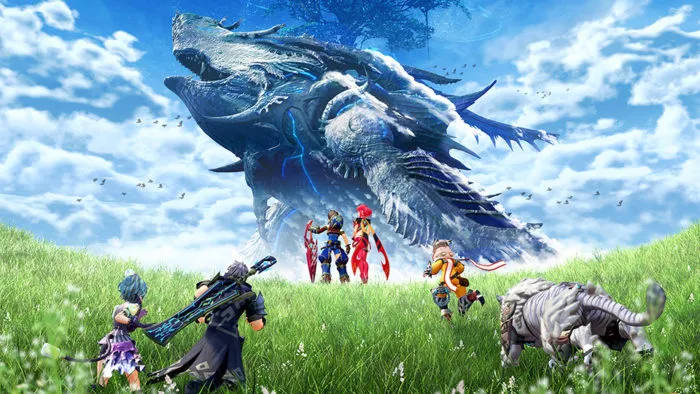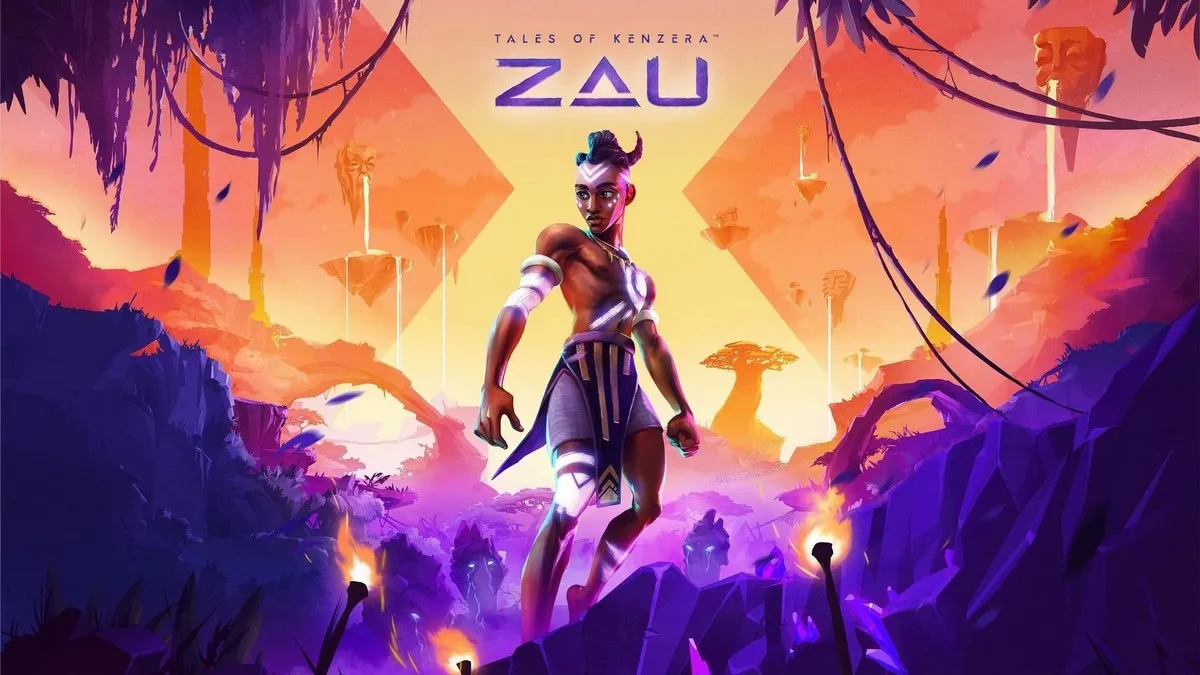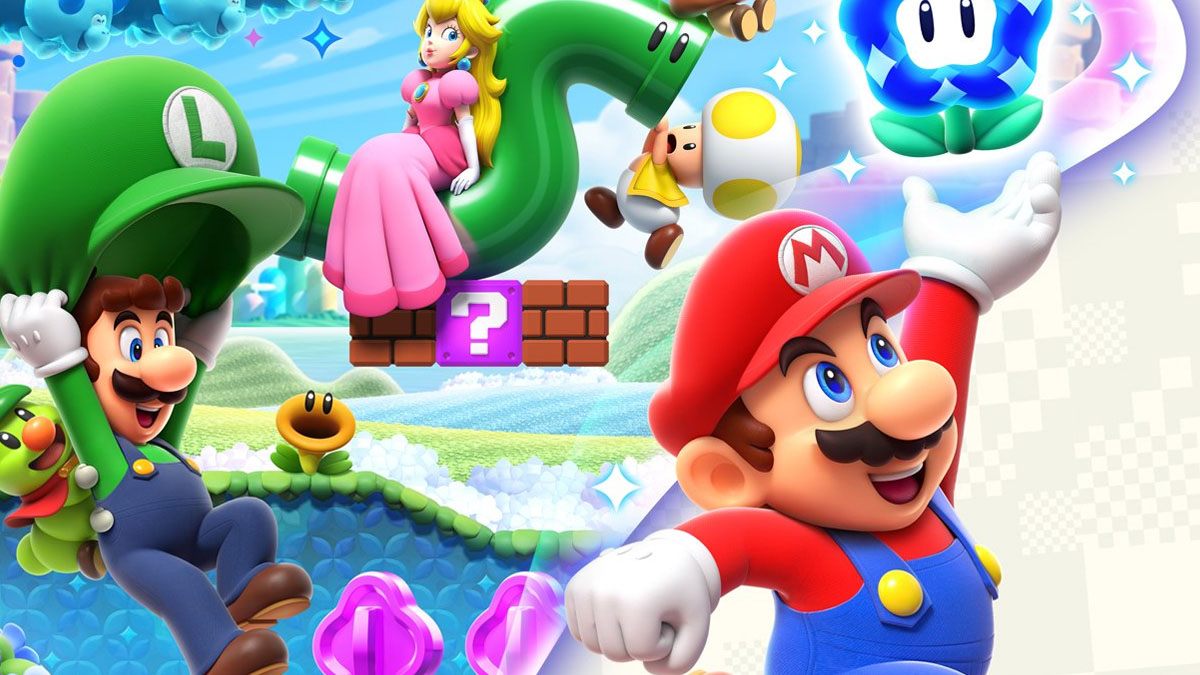Xenoblade Chronicles 2 on Nintendo Switch
Over the last seven years Xenoblade Chronicles has gone from potentially never making its way to the United States, to becoming a full-fledged first-party series for Nintendo. Xenoblade Chronicles 2 marks the last big release for the Switch in 2017, another huge adventure to undertake in the wake of everything else that released this year. With Xenoblade Chronicles X releasing just two years ago, that’s a pretty quick turnaround for a JRPG the size of Xenoblade Chronicles 2. While there are some warts and blemishes, Xenoblade 2 manages to be a hugely ambitious title, and a trip definitely worth taking even for how complex it is.
Xenoblade Chronicles 2 takes place in the world of Alrest, where humans and other beings reside on the backs of gigantic titans which roam the massive cloud sea of the world. You play as a young man named Rex, a salvager by trade who dives into the cloud sea to obtain treasure and other items. Rex also lives on the back of his own titan called “Gramps.” At the beginning of the game Rex is given a big job to help out on retrieving a specific item. This mission leads to him meeting a Blade named Pyra, and changes his life forever.
The relationship between Pyra and Rex is central to the story of Xenoblade 2, and the game really is a “boy meets girl” story filled with a fantasy twist. Other party members of course come into the mix like the stoic catgirl Nia, and the excitable Nopon named Tora. The game has a robust cast of party members, each of which feel sufficiently developed over the course of the game with their own plotline. While many of the characters and plotlines do feel like stereotypical JRPG fare for a while, Xenoblade 2 does a good job of getting you invested in the scrappy bunch and the narrative that spans across its 60 or so hours of main story. Voice acting is also an eclectic mix of different accents from various parts of the world, including American, British, and Scottish. Generally performances are good across the board, with a few exceptions, and the accents were something that really grew on me and felt like a fresh feature from other RPGs, just like in the first Xenoblade Chronicles.
At the same time the world of Alrest is really the star of the show as it’s massive, gorgeous, and filled with things to see and do. Each titan that you travel to within the game is completely unique and rendered in lavish detail, to the point that Xenoblade 2 has some of my favorite environments in recent RPG history. It certainly helps that everything is bolstered by an absolutely incredible soundtrack that mixes sweeping orchestras with gritty rock to produce one of the best of the entire year. There’s also a ton of secrets and rewards to uncover throughout the world, but most of these are gated behind abilities that your characters need. This can be frustrating as unlocking some of these abilities requires serious work, which we’ll get into soon.

Xenoblade 2 is definitely a slow burn of a game, as I was still getting elements of combat thirty hours in and didn’t even unlock the final option in the main menu until I hit around the 40 hour mark. Make no mistake; this is a hardcore RPG, and there’s layers upon layers of systems to dive into. Combat is probably the most complicated and different part about Xenoblade 2 from other games and its predecessors.
The combat UI has been simplified from Xenoblade X, giving you four different arts to use assigned to the A, B, X, and Y buttons. Your characters auto-attack, and cooldown timers for your arts are now built up by using auto-attacks instead of on a timer. A central idea in Xenoblade’s story is the relationship between Blades and Drivers. Blades are essentially powerful beings born from Core Crystals that are bonded for life to the Driver that awakens them, until the Driver dies. Blades give immense power to their Drivers, and even grant them weapons specific to their type, and all of this plays into the game’s system.
On the directional buttons you can set up to three different Blades and switch between them on the fly in battle, although they have their own cooldowns. Each Blade also comes with their own weapon type and element, which play into combat in terms of enemy weaknesses and pulling off powerful special moves. These are just the very basics as Xenoblade 2’s combat is far too complex to explain here as many different elements get introduced including Driver combos, Blade Combos, Chain Attacks, and more. It’s all a lot to take in at first and newcomers may be put off by the complex combat system, but as you start to dig into the various elements and everything comes together, combat is a blast.
Despite being an active time system Xenoblade’s combat keeps you constantly engaged and involved, using arts and setting up combos. It’s an engaging system that gets better the more you go along with the game, especially once you unlock the ability to equip a second and third Blade. Speaking of Blades, that brings up another essential component of the game. Across your journey you’ll collect Core Crystals which can be used in the menu to bond Blades to Drivers. The catch, however, is that these crystals randomly draw Blades, both common and rare. This means that outside of getting ones from the story, getting rare Blades can be a bit of a crapshoot at times. In my personal experience I didn’t have much trouble getting special and rare ones, gathering quite a few in my time.
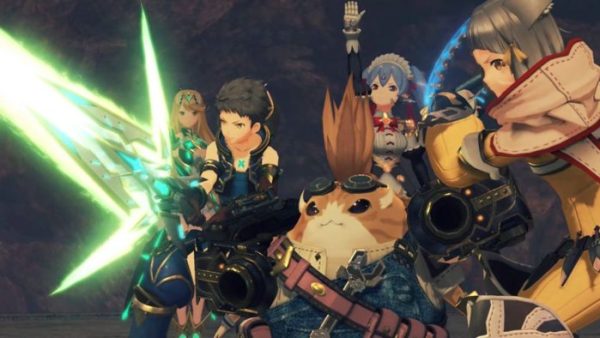
There’s a wide array of customization options for both your Drivers and your Blades. Blades have an affinity chart that unlock skills in combat as well as the field skills you need to pass obstacles and unlock chests. Each node on the affinity chart has a note on how to unlock it, but the field skills can be particularly tedious to get as they most often require you to use a Blade’s favorite item in your pouch. This requires a lot of trial and error, blocking your from progressing sidequests and treasure hunting until you figure out how to upgrade field skills.
On top of that you can equip Core Chips to change weapons, and Aux Cores that function as accessories. As if that wasn’t enough you get to customize your Driver’s arts for each weapon, unlock skills with SP, equip accessories, set Blades, and set consumables in your pouch to grant you bonuses. Yeah, remember when I said Xenoblade 2 was complicated? There’s a lot of different options for customizing your character, and it can definitely be overwhelming initially. However, part of the fun later on comes with choosing your best party and customizing everything just so to get a great battle strategy.
Another added layer of complexity comes with stores and the “Dev Level” of each area in the game. By completing sidequests and objectives on each of the main titans, you can raise this Dev Level opening up even more sidequests, and new items to buy at the store. This also ties into the Merc Group option you unlock later that lets you send teams of Blades out on timed missions for rewards.
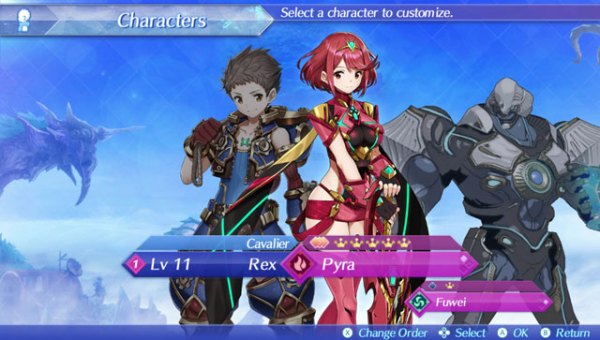
There’s so much to see and do in Xenoblade 2 it’s staggering, but sadly not all of it is engaging. The plethora of sidequests in the game mostly boil down to generic fetch quests or battles, and they often ask a ridiculous amount of objectives to complete, making you trudge back and forth between areas. There are interesting sidequests that contain story bits or fun objectives, but there’s still a problem with the majority of them that can drag down your experience. While out exploring you’ll also need to keep in mind factors like the time of day and whether the cloud sea is at high tide or low tide, both of which can alter where you’re able to explore. Keep in mind that while sidequests are a great way to boost your party’s levels and items, they’re completely optional and not necessary for completing the main story.
Presentation-wise Xenoblade Chronicles 2 is a gorgeous game, rendered with a lavish anime art style. The game runs well in docked mode with an almost consistent frame rate throughout. However, handheld mode is another story entirely. Xenoblade Chronicles 2 is certainly playable in handheld mode, but the game really takes a hit. The resolution and image quality can take a real hit depending on where you are, or how many effects there are on screen. The same can be said for frame rate, although it’s never bad enough to make the game unplayable. With its vibrant art style and gorgeous vistas though, docked mode is really the ideal way to play Xenoblade Chronicles 2.
The various layers and complexities of Xenoblade Chronicles 2 make it a hard game to breach for anyone not willing to put in the time or effort. It’s unfortunate that the many tutorials in the game can’t be looked at again or read within the game, as it’s easy to forget a system here and there. Still, despite some rough edges and disappointments Xenoblade Chronicles 2 is a massive game with an ambitious story and world that try to do more than your typical fare, and mostly succeed.
Xenoblade Chronicles 2 certainly isn’t a title for those looking for a quick to play RPG or an easy to learn experience, but for anyone willing to invest the time there’s a gem underneath that just needs to be buffed out.
SCORE: 4/5 – GREAT
PROS
| CONS
|

